Hello again students of pool, let’s get settled into our desks and the lecture can begin.
Problems with Scale in Pools
Scale are mineral deposits, and if you’ve ever seen spots on drinking glasses after you’ve pulled them from the dishwasher, you are familiar with calcium scale.
In swimming pools, scale easily deposits as stains on pool surfaces, thin films, dirty spots and sharp crystals. In extreme cases, it can produce a viscous mineral scum on the water level, coat the inside of pipes and even clog up a pool heater.
Mineral scale from stone or rock walls, called efflorescence, is also a common issue for pools with rock retaining walls, as moisture seeps through the wall, it brings mineral scale which forms ugly brownish white stalactites on the rock and tile.
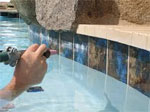
In hard water areas of the southwest, hundreds of companies exist that bead-blast pool tiles to remove calcium scale deposits, and restore the original color and luster.
Mineral scale and total dissolved solids is also at least partially responsible for most cloudy pool water conditions. And if not cleaned regularly, can cause saltwater pool salt cells to fail.
So yes, mineral scale is a nuisance in pools, let’s look at what you can do about it.
Solutions for Scale in Pools
Although nearly 85% of the U.S. has what is considered to be ‘hard water’, you don’t have to take pool scale lying down! There are several ways to prevent scale in pools, and also several ways to remove scale in pools.
Preventing Scale in Pools
Use a Pre-Filter
The Pleatco Pool Pre-Filter is used to remove particulate matter as you add water to the pool. Just screw the 5-stage filter on to your garden hose and fill the pool like normal. Removes stain and scale causing contaminants; filling your pool with pure H2O.
Control Your pH
Allowing pool pH and alkalinity to rise makes it much easier for scale to precipitate out of solution. Maintain pH levels in the 7.2-7.6 range, and buffer your pH with a proper level of Total Alkalinity, in the 80-120 ppm range. When levels are too high is when scaling occurs.
Sequester the Scale
For those of you in hard water areas that struggle with high calcium hardness levels, add a bi-monthly dose of Scale Free by Natural Chemistry, to keep mineral scale locked in solution, or sequestered (yes, like jurors). Also very effective is our own Super Stain Away. Sequestering agents are not long lasting, reapply regularly for best results.
Brush Your Pool
Brushing your pool, especially plaster and pebble finish pools, is an important way to prevent scale film and nodule formation. Running pool cleaners regularly also discourages heavy scale deposits by keeping the pool surfaces, especially steps and floors, clean.
Control Your Calcium
When Calcium Hardness levels rise above 500 ppm, you can expect problems, and when over 1000 ppm, you really have to be careful to avoid scale problems in pools. 180-220 ppm (or even up to 300 ppm) is the optimum level. Too high can be a problem, but also levels below 150 ppm can make the water aggressively hungry for calcium hardness.
Removing Scale in Pools
Scrub the Scale
Scale can be removed from plaster and pebble surfaces with manual action, either from a stainless steel bristle pool brush, a pumice stone like the PoolStone, or with abrasive cleaning tools like the Stain Eraser. Vinyl and fiberglass pools need gentler removal methods.
Acid Washing
Acid washing is a purposeful stripping of a very thin layer of plaster, exposing clean and fresh plaster beneath. As such, it’s not something you can do every year, but every 5 years doesn’t hurt, and it is really the best way to remove years of stubborn scale deposits.
Sequester the Scale
Removing scale deposits on pool surfaces without some type of mechanical action is difficult, but some films and localized deposits may be effectively treated by adjusting your pH to an acidic condition, and treating with a heavy dose of our Super Stain Away. Follow up with heavy brushing and near constant filtration, using clarifiers as needed to help sand filters and small cartridge filters.
Reverse Osmosis
When calcium carbonate reaches critical levels in a pool, dilution is the solution, unless you have a pool water recycling company nearby. Huge truck mounted pumps will push all of your pool water thru reverse osmosis filters, and then pump it back in, as pure H2O.
So there you have it, all the ways to deal with calcium scale problems in swimming pools. One more tip is to calculate the Langelier Saturation Index on your pool water, which incorporates temperature into the equation, and important ingredient for scaling.
Calculating LSI is a fun mathematical exercise, but Pentair Pool has saved you the trouble, with their nifty online tool, a LSI Calculator. Use it regularly to fine tune your pool water’s propensity to scale.

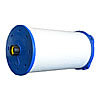

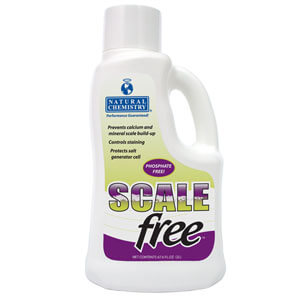
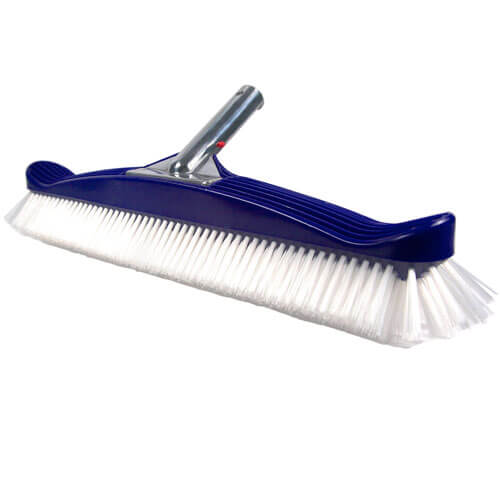


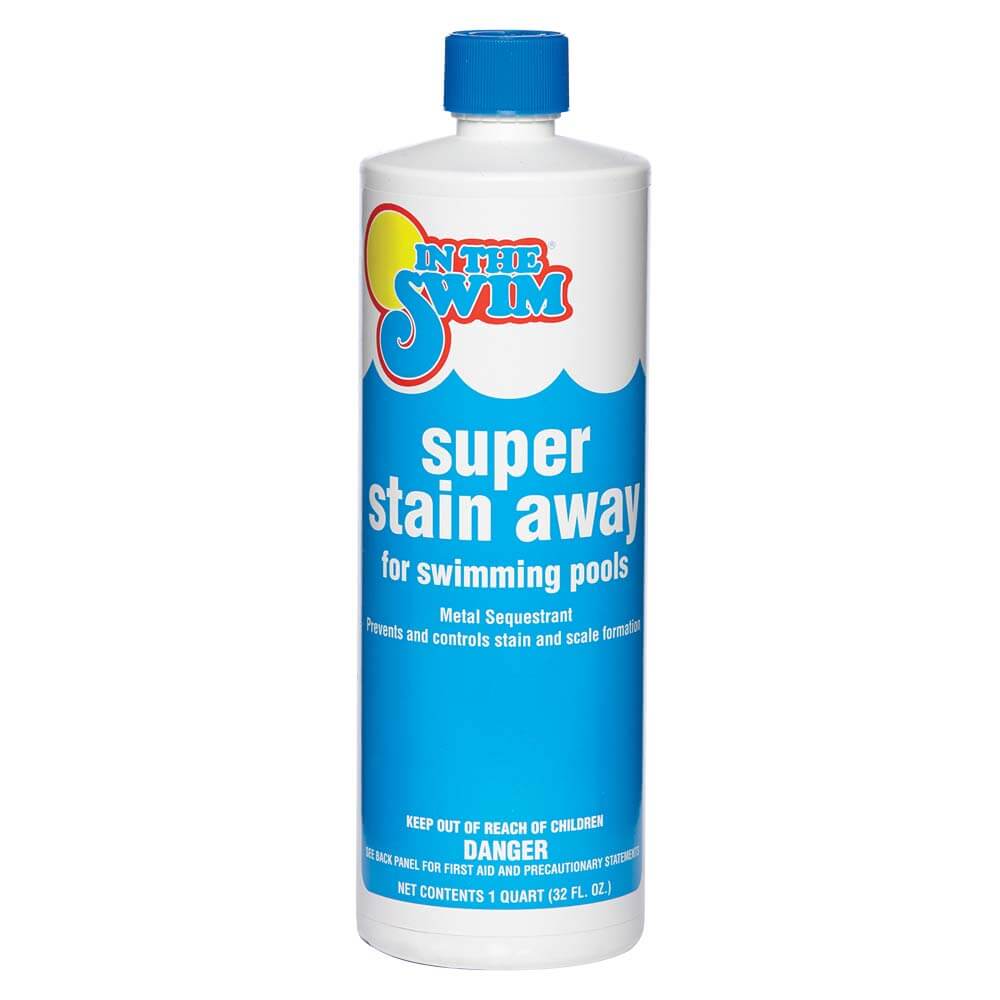
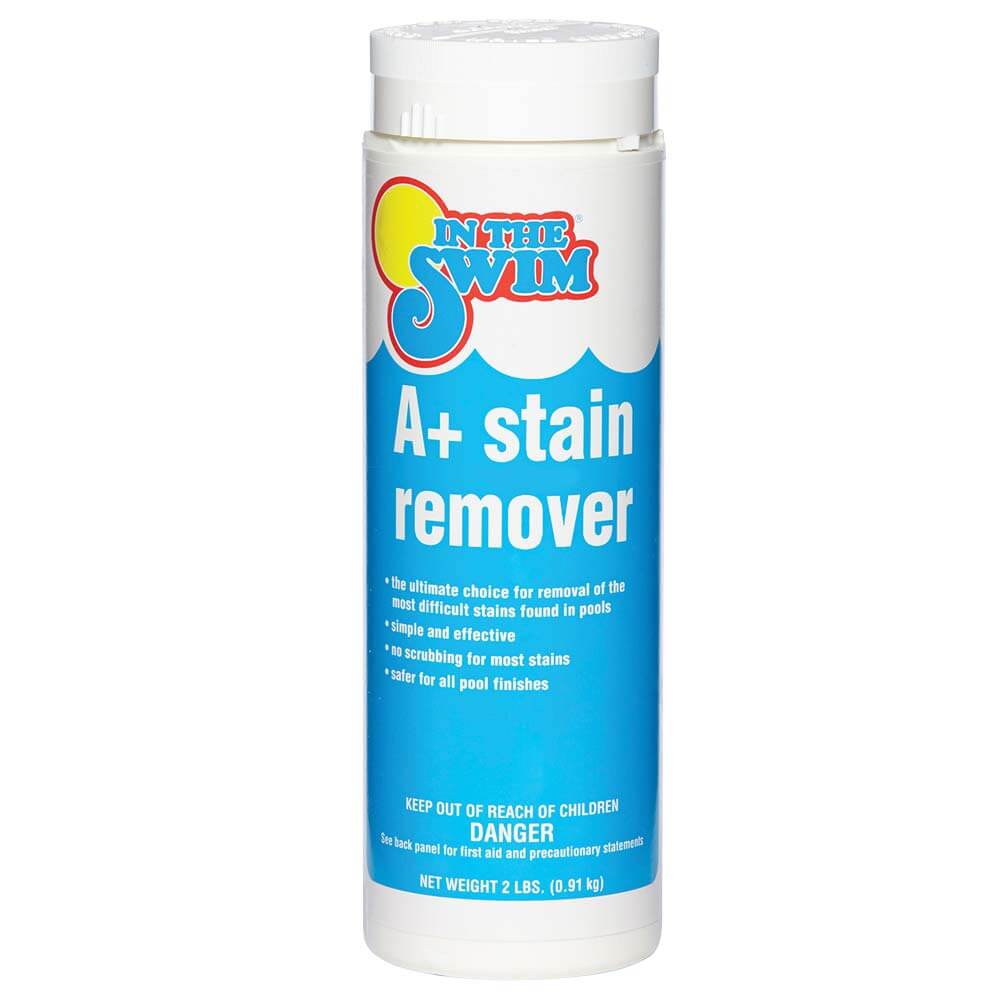
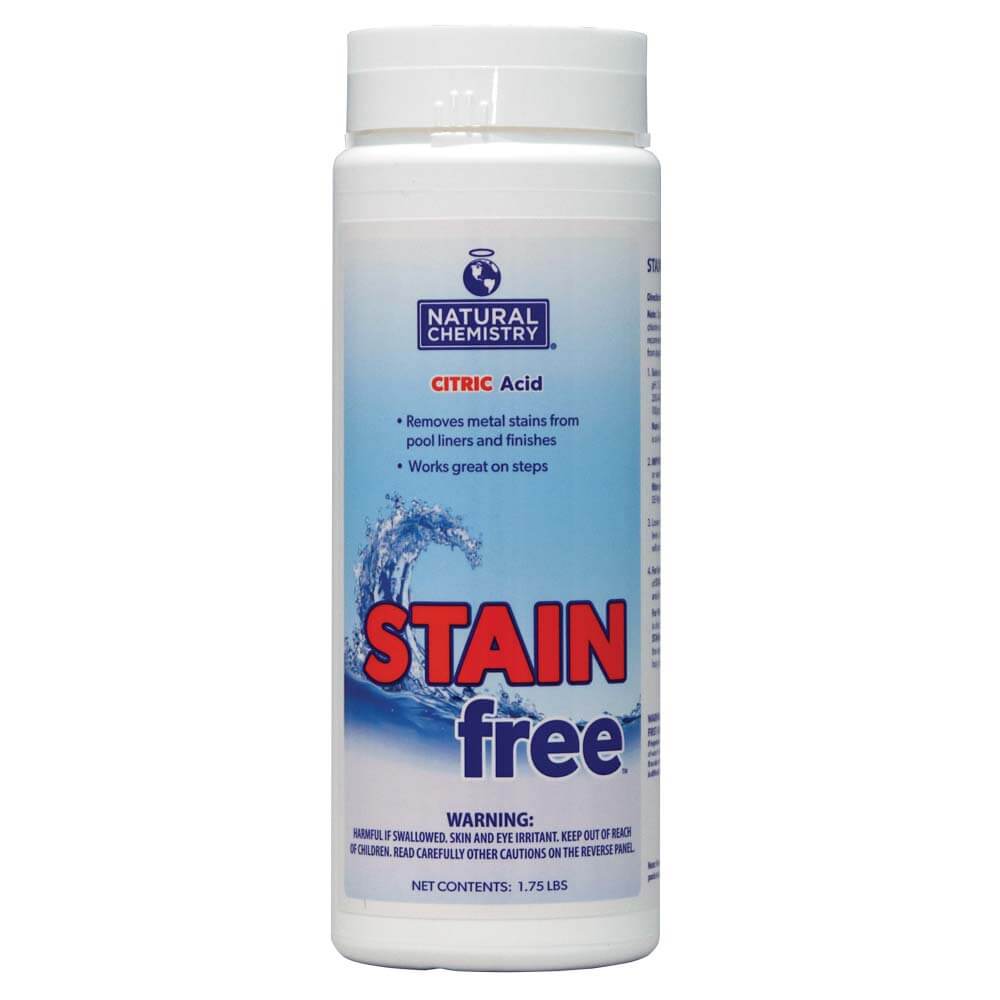


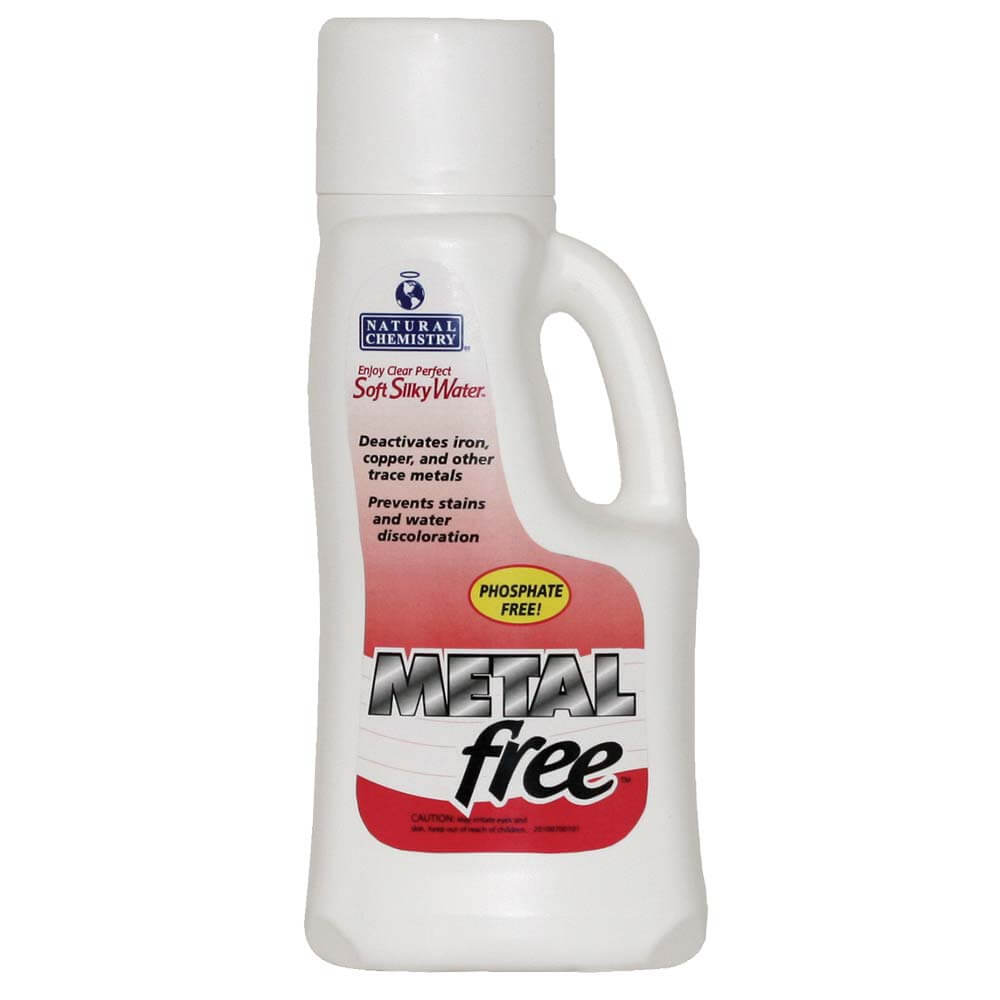

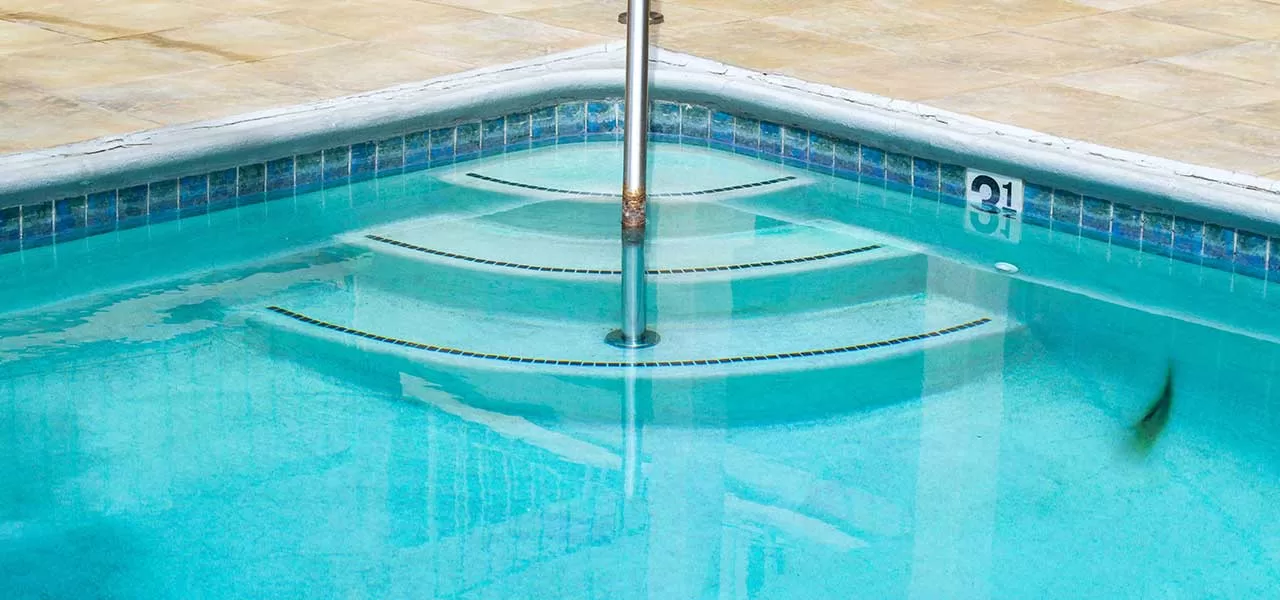
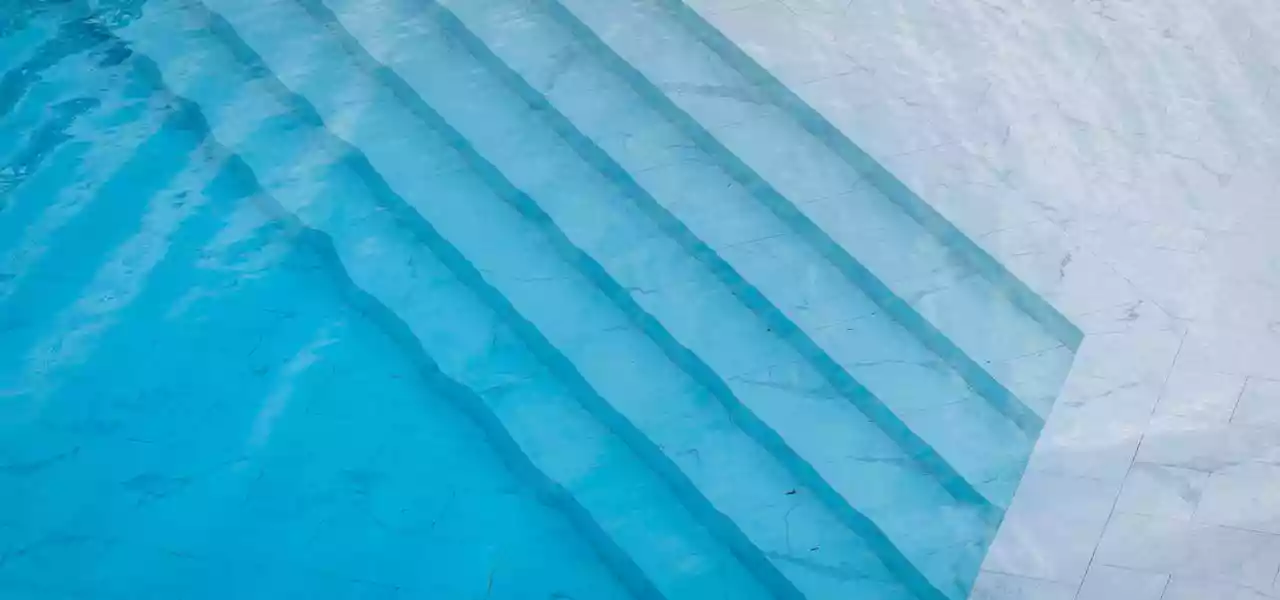
Looking forward to our 29th year with a pool. It also marks our 29th year of being able to rely on the good quality products and quick delivery service of In The Swim. Dependability is in short supply these days, thank you !